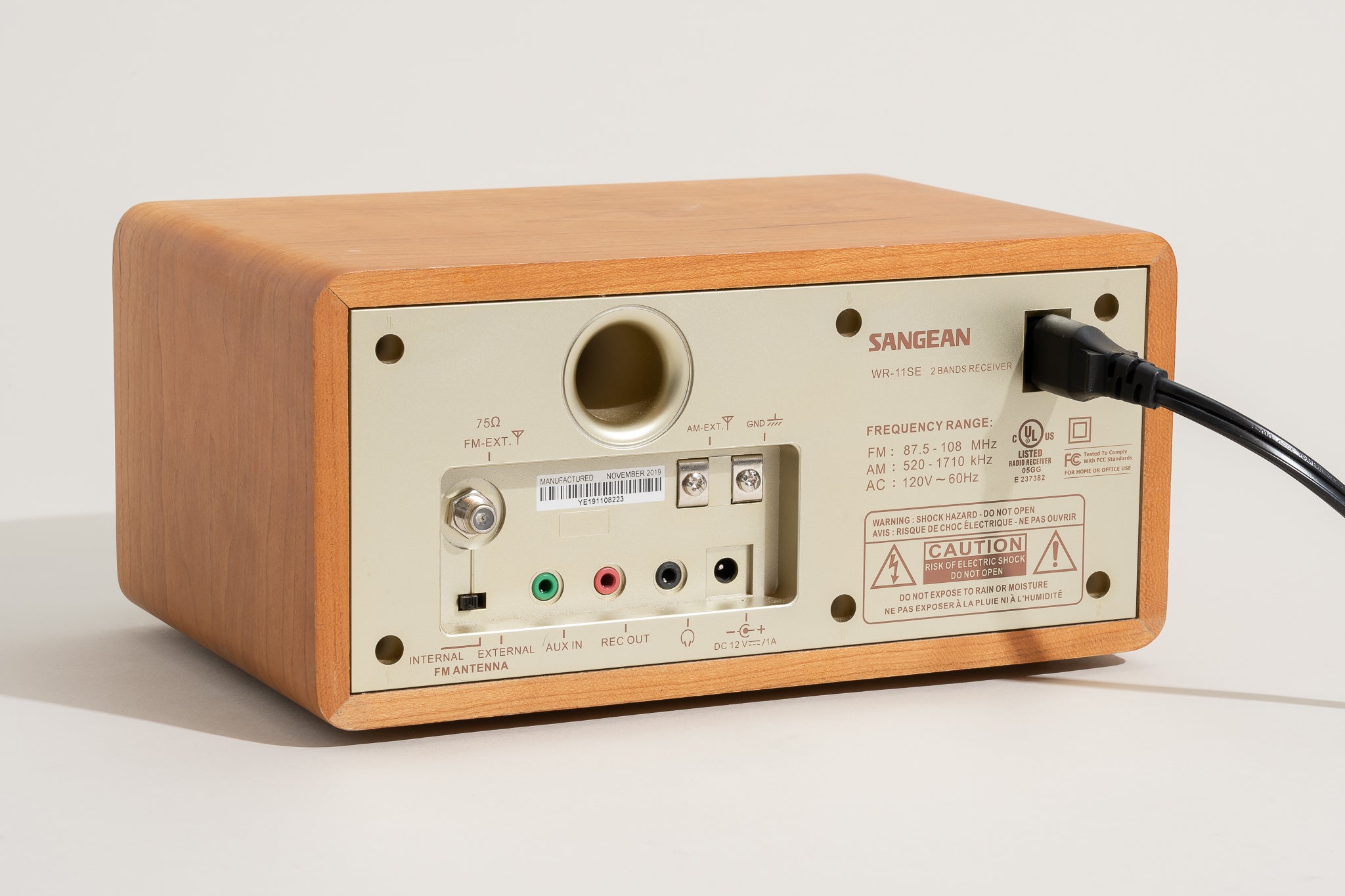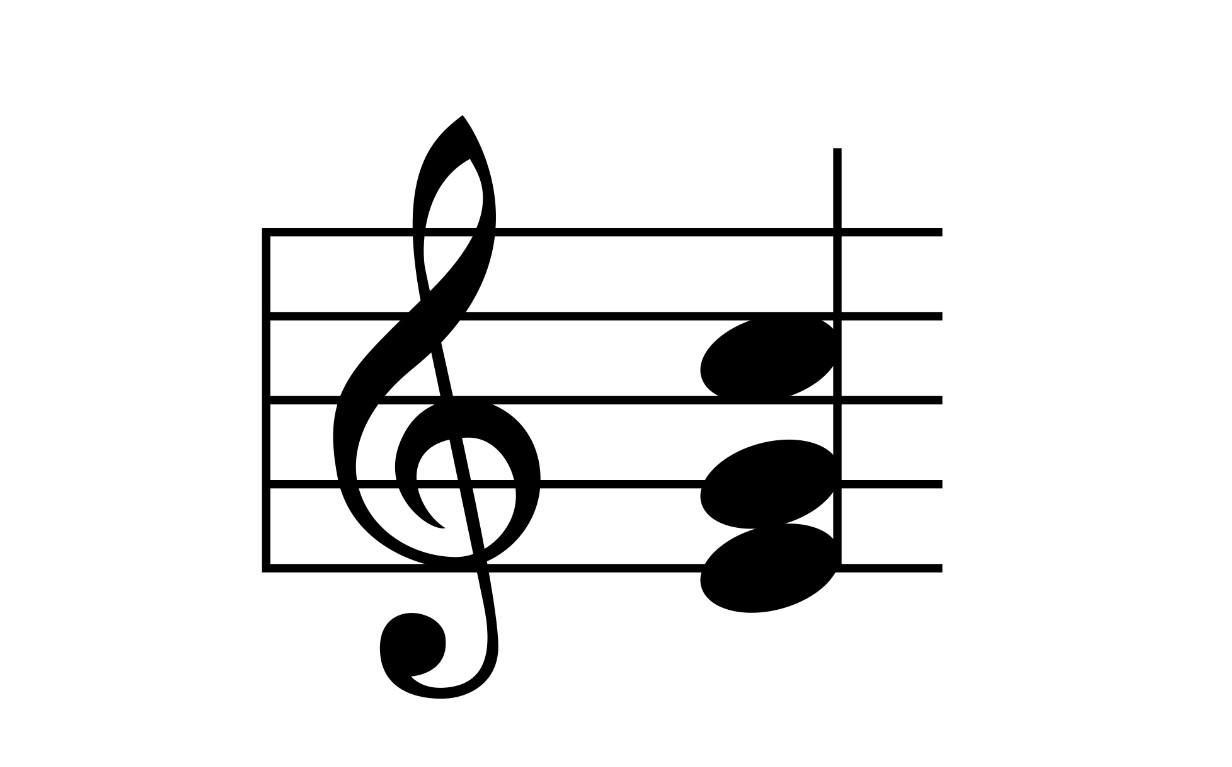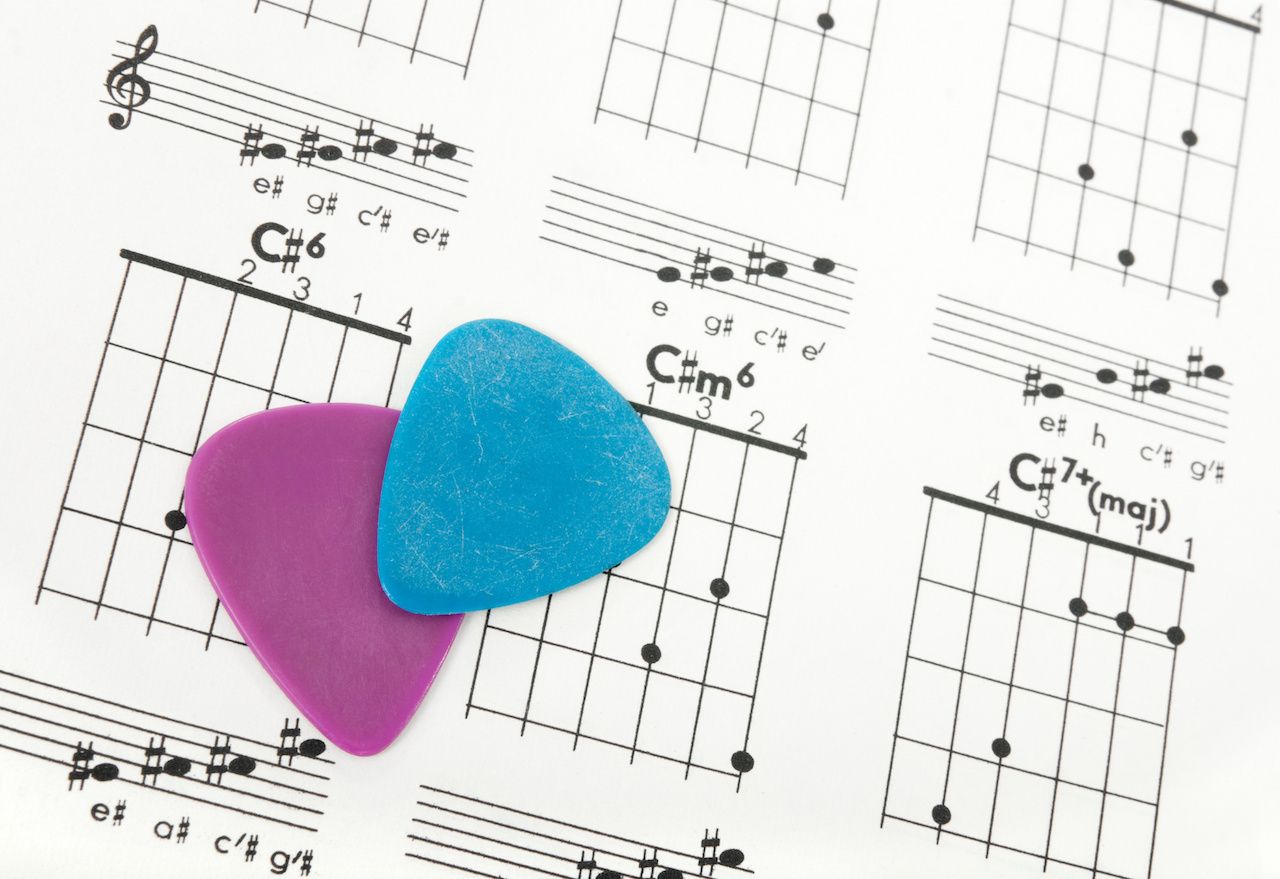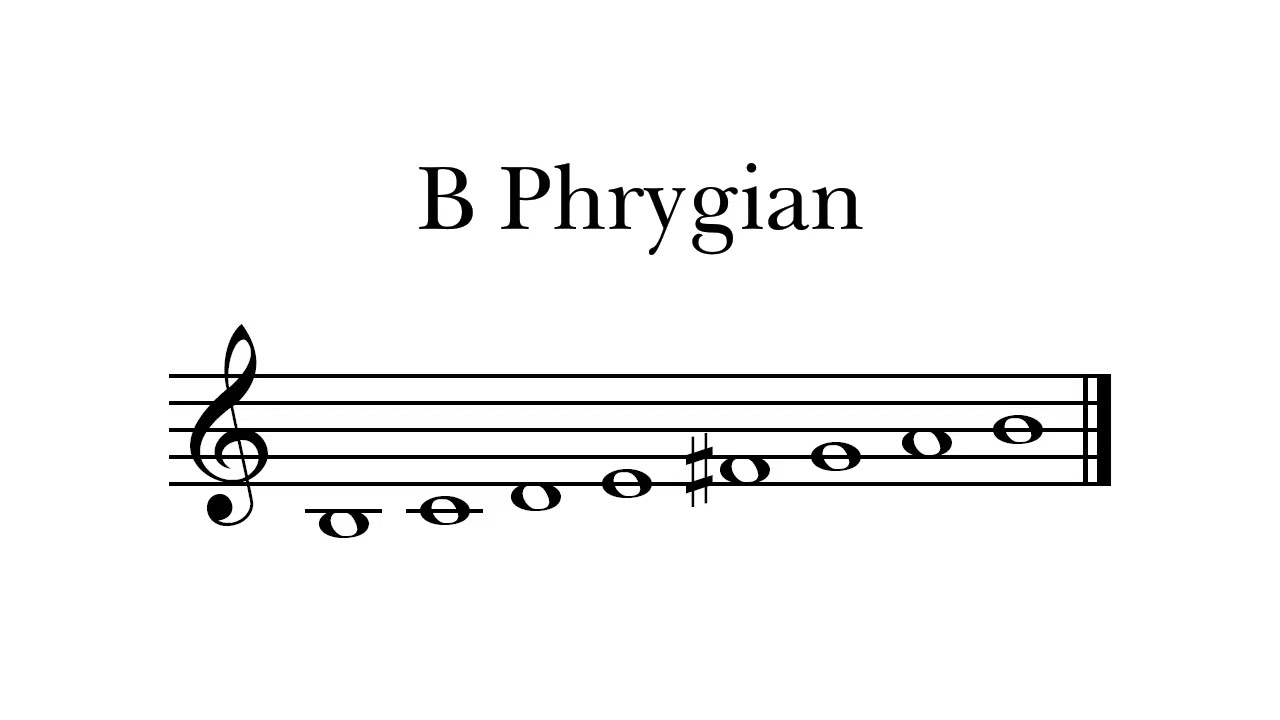Home>Production & Technology>Music Theory>Why Are There Two Places For Am7 Guitar Chord Music Theory


Music Theory
Why Are There Two Places For Am7 Guitar Chord Music Theory
Published: January 30, 2024
Learn why there are two places for the Am7 guitar chord in music theory. Discover the essential concepts and variations in our comprehensive guide.
(Many of the links in this article redirect to a specific reviewed product. Your purchase of these products through affiliate links helps to generate commission for AudioLover.com, at no extra cost. Learn more)
Table of Contents
Introduction
Welcome to the fascinating world of music theory! In this article, we will explore the intriguing topic of the Am7 guitar chord and why there are two different positions for it. Music theory is the foundation that underpins our understanding of chords, scales, and harmony, allowing musicians to communicate, compose, and improvise with confidence.
As musicians, we often find ourselves drawn to the magic that can be created by a simple chord progression. The Am7 chord, in particular, has a unique and melancholic quality that adds depth and emotion to compositions across various genres, including jazz, blues, and pop.
Understanding the different positions of the Am7 chord on the guitar not only expands our chord voicing options but also deepens our understanding of how chords are constructed and how they relate to the overall harmony of a song. By delving into the theory behind these positions, we can unlock new creative possibilities and develop a stronger foundation for our musical journey.
So, whether you’re a beginner guitarist eager to learn new chord shapes or a seasoned musician looking to expand your musical horizons, join us as we embark on a journey to unravel the secrets of the Am7 chord and discover the significance of its two distinct positions.
Understanding Am7 Guitar Chord
Before we delve into the two different positions of the Am7 chord, let’s first understand what exactly the Am7 chord is. The Am7 chord, also known as A minor 7, is a four-note chord that consists of the root note A, the minor third C, the perfect fifth E, and the minor seventh G.
When played on the guitar, the Am7 chord creates a mellow and introspective sound. It is commonly used in a variety of musical styles, including folk, rock, and even classical music. The versatility of the Am7 chord allows it to evoke different emotions depending on the context in which it is used.
To play the Am7 chord, we can use open strings as well as fretted notes. One common way to play the Am7 chord in the open position is by placing the following fingers on the corresponding frets: the index finger on the 1st fret of the B string, the middle finger on the 2nd fret of the D string, and the ring finger on the 2nd fret of the G string. This shape allows for an open A string to be played and adds richness to the overall sound.
Another way to play the Am7 chord is by using a barre chord shape. This involves using the index finger to press down multiple strings across the guitar neck and creating a movable chord shape. The advantage of using a barre chord shape is that it allows for easy transposition to different keys.
Understanding the structure and fingerings of the Am7 chord is the first step towards mastering it on the guitar. Now that we have a solid foundation, let’s explore why there are two different positions for the Am7 chord and how they can be utilized to add variety and flavor to our playing.
The Importance of Music Theory
Music theory forms the backbone of any musician’s journey. It is the language that allows us to communicate, analyze, and understand the inner workings of music. When it comes to playing guitar or any other instrument, having a solid understanding of music theory is essential for unlocking our full potential and expanding our musical repertoire.
By studying music theory, we gain insights into the fundamental elements of music. We learn how chords are constructed, how scales are formed, and how melodies are created. This knowledge empowers us to make informed musical choices, whether it’s improvising a solo, composing a song, or analyzing a piece of music.
When it comes to the Am7 chord, music theory provides us with a roadmap for exploring its various positions and voicings. It helps us understand the relationship between notes, intervals, and chord shapes, allowing us to navigate the fretboard with ease and creativity.
Furthermore, music theory helps us understand the harmonic context in which the Am7 chord is used. We can analyze chord progressions, identify key centers, and make informed decisions about chord substitutions and extensions. This deeper understanding of music theory enables us to craft compelling and sophisticated musical arrangements.
Moreover, studying music theory enhances our ability to communicate and collaborate with other musicians. When we speak the same language of chords, scales, and harmonic progressions, we can easily share ideas, jam together, and create harmonious musical experiences.
While some may perceive music theory as a dry and academic subject, it is essential to remember that it is a tool that empowers our musical creativity. It provides a framework for experimentation, innovation, and personal expression. By embracing music theory, we open ourselves up to new possibilities and elevate our playing to new heights.
So, whether you’re a beginner just starting to explore the world of music theory or an experienced musician looking to deepen your knowledge, remember that music theory is not something to be feared, but rather something to be embraced and celebrated.
The First Position for Am7
When it comes to playing the Am7 chord on the guitar, the first position is one of the most common and accessible options. This position utilizes open strings, which not only adds depth and resonance to the chord but also makes it easier to play for beginners.
To play the Am7 chord in the first position, here’s a step-by-step guide:
- Place your index finger on the 1st fret of the B string.
- Place your middle finger on the 2nd fret of the D string.
- Place your ring finger on the 2nd fret of the G string.
- Strum from the open A string to the high E string.
When played correctly, you’ll hear a rich and warm sound that characterizes the Am7 chord. This position allows for easy transition to and from other open chords, making it a versatile voicing for chord progressions.
One of the advantages of the first position Am7 chord is its simplicity and accessibility for beginners. By using open strings and only three fingers, it is relatively easy to master. This makes it a great starting point for those new to the guitar, as it provides a satisfying sound while building essential finger dexterity and coordination.
While the first position Am7 chord is relatively straightforward, it’s important to note that it is just one of the possible voicings for the Am7 chord. Exploring different positions and voicings can add variety and flavor to your playing, allowing you to create unique sounds and textures.
Next, let’s delve into the second position for the Am7 chord and explore its distinct qualities and advantages.
The Second Position for Am7
While the first position Am7 chord is a great starting point, exploring different positions and voicings can add depth and versatility to your playing. The second position for the Am7 chord offers a different finger positioning and allows for a different tonal quality.
To play the Am7 chord in the second position, follow these steps:
- Place your index finger on the 5th fret of the low E string.
- Place your ring finger on the 7th fret of the A string.
- Place your middle finger on the 6th fret of the D string.
- Strum from the open A string to the high E string, excluding the low E string.
The second position Am7 chord has a slightly brighter and more focused sound compared to the first position. This is due to the lack of open strings and the higher register of the chord voicing. It adds a different color to your chord progressions and can be a great option for creating unique sonic textures.
One advantage of the second position Am7 chord is its mobility on the guitar neck. Since it is a movable chord shape, you can easily transpose it to different keys by simply shifting the finger position up or down the neck. This flexibility allows for greater creativity and adaptability when playing chord progressions.
Moreover, by exploring the second position for the Am7 chord, you expand your understanding of the fretboard and the relationship between notes. This knowledge can be transferred to other chords and shapes, enabling you to navigate the guitar with more confidence and ease.
Remember, the second position Am7 chord is just one of many possible voicings. Experimenting with different positions, inversions, and fingerings will not only deepen your understanding of the Am7 chord but also help you develop your own unique playing style.
Now that we have explored both the first and second positions for the Am7 chord, let’s compare their qualities and advantages to help you make an informed decision about which position to use in different musical contexts.
Comparing the Two Positions
When it comes to the first and second positions for the Am7 chord, both offer distinct qualities and advantages. Let’s compare these positions to help you understand when and how to use each one effectively.
The first position Am7 chord, with its open strings, provides a rich and resonant sound. It is an ideal choice for beginners due to its simplicity and accessibility. This position allows for smooth transitions to other open chords, making it versatile for strumming and chord progressions. The inclusion of open strings also adds a unique tonal quality that suits certain musical styles and moods.
On the other hand, the second position Am7 chord offers a different character and versatility. Without the open strings, it produces a brighter and more focused sound. This voicing is movable, allowing you to transpose the chord to different keys with ease. The second position is beneficial when you want to add variety to your chord progressions or create contrasting textures in your playing. It also enhances your understanding of the fretboard and expands your overall guitar knowledge.
When deciding which position to use, consider the musical context and desired effect. The first position may be more suitable for strummed accompaniment, creating a warm and open sound. It is favored in folk, pop, and singer-songwriter genres. The second position, with its versatility and mobility, can be a great choice for chord embellishments, arpeggio patterns, and chord inversions. It adds a different flavor to jazz, blues, and more intricate arrangements.
Ultimately, your choice between the first and second positions depends on your playing style, musical preferences, and the specific requirements of the song or piece you are working on. It is beneficial to experiment with both positions and explore their possibilities in different musical contexts.
Remember that these positions are not the only way to play the Am7 chord. There are multiple other voicings and inversions available on the guitar neck. As your musical journey progresses, don’t hesitate to explore further and discover new ways to express yourself with the Am7 chord.
Now, let’s broaden our horizons and explore different voicings of the Am7 chord to add even more depth and variety to our playing.
Exploring Different Voicings
As we continue our exploration of the Am7 chord, it’s exciting to discover the world of different voicings. Voicings refer to the specific arrangements and fingerings of the notes within a chord. By experimenting with different voicings, we can create unique sounds and expand our creative possibilities.
One popular voicing for the Am7 chord is the barre chord shape. By using the index finger to bar all the strings at a certain fret, we can create a movable chord shape that can be played in any key. The most common barre chord shape for Am7 utilizes the index finger barring the 5th fret and the ring finger pressing down on the D, G, and B strings at the 7th fret. This voicing produces a fuller sound and allows for chord progression up and down the fretboard.
Another voicing option is the triad-based voicing, which involves playing only the essential tones of the chord. For example, we can play the notes A, C, and G on the 5th, 5th, and 3rd frets of the E, B, and high E strings, respectively. This voicing creates a more minimalistic and intimate sound, perfect for adding delicate touches to a composition or providing a contrasting texture in a chord progression.
Furthermore, we can explore different inversions of the Am7 chord. Inversions involve rearranging the order of the notes within the chord, resulting in a different harmonic color. For example, instead of playing the root note A as the lowest note in the chord, we can play the third (C), fifth (E), or seventh (G) as the lowest note. These inversions can create smoother voice leading, add tension and release, and give a fresh perspective to familiar chord progressions.
When exploring different voicings, it’s essential to listen carefully to the sound produced by each variation. Pay attention to how the chord fits within the overall context of the song, the desired mood, and the interplay with other accompanying instruments. Experimentation is the key to finding the voicings that resonate with your musical style and the specific musical piece you are working on.
By incorporating different voicings into your playing, you add depth, nuance, and versatility to your musical repertoire. These variations can inspire new compositions, improvisation ideas, and unique sonic landscapes. As you continue to develop as a guitarist, continue exploring and incorporating different voicings to take your Am7 chord playing to new heights.
Next, let’s talk about how we can apply music theory concepts to enhance our understanding and utilization of the Am7 chord.
Applying Music Theory to Am7
Applying music theory concepts to our understanding of the Am7 chord can greatly enhance our playing and improvisation skills. Let’s dive into a few theoretical concepts and techniques that can be applied to the Am7 chord.
Firstly, understanding the harmonization of the major scale is key. The Am7 chord is derived from the key of C major, where A is the sixth degree of the scale. This means that in the context of the key of C major, the Am7 chord serves as the tonic chord, creating a sense of resolution and stability. By knowing the relationship between scales and chords, we can easily incorporate the Am7 chord into chord progressions and improvisations.
Another useful concept is chord substitutions. Since the Am7 chord shares some notes with other chords, we can substitute it to create interesting harmonic variations. For example, we can replace the Am7 with the Am9 or Am11 chord to add different colors and textures to our playing. These substitutions can add complexity and richness to chord progressions, making them more intriguing and fresh sounding.
Additionally, understanding chord extensions is crucial for enhancing the musicality of the Am7 chord. By adding notes beyond the basic triad, such as the ninth (B), eleventh (D), and thirteenth (F), we can create lush and sophisticated chords. Experimenting with different voicings and combinations of these extensions can lead to intriguing and harmonically complex sounds.
When it comes to soloing and improvisation over the Am7 chord, scales play a vital role. The A natural minor scale, also known as the Aeolian mode, is the most common choice for expressing melodies and improvising over the Am7 chord. This scale includes the notes A, B, C, D, E, F, and G. By familiarizing ourselves with the Aeolian mode and exploring different melodic ideas within it, we can evoke different moods and emotions in our solos.
Furthermore, employing techniques such as arpeggios, chromaticism, and chord tones targeting can add depth and sophistication to our improvisations. Arpeggios outline the individual notes of the Am7 chord and provide a melodic foundation for soloing. Chromaticism involves incorporating non-diatonic notes into our playing, creating tension and resolution. Targeting chord tones emphasizes the strong harmonic relationship between the melody and the underlying chord, resulting in a more cohesive and melodic solo.
By applying these music theory concepts to the Am7 chord, we can elevate our playing, expand our harmonic palette, and unlock new creative possibilities. Experimenting with different approaches and techniques will lead to personal growth and an enhanced understanding of the musical language surrounding the Am7 chord.
Now that we have explored the theoretical aspects of the Am7 chord, let’s summarize our findings and conclude our journey through the fascinating world of music theory and the Am7 chord.
Conclusion
Throughout this article, we have delved into the intriguing world of the Am7 guitar chord and explored why there are two different positions for it. By understanding the structure and fingerings of the Am7 chord, we gain a solid foundation for our playing. The first position Am7 chord, with its open strings, offers accessibility and versatility, while the second position provides a different tonal quality and mobility on the fretboard.
By comparing the two positions, we have learned that each has its own advantages and can be used in different musical contexts to create diverse sounds and textures. Additionally, exploring different voicings of the Am7 chord, such as barre chord shapes and inversions, adds depth and variety to our playing.
Applying music theory concepts to the Am7 chord enables us to enhance our understanding and utilization of this chord. Understanding the harmonization of the major scale, exploring chord substitutions and extensions, and incorporating different scales and techniques into our playing elevate our musicality and improvisation skills.
As musicians, embracing music theory and continually exploring different chord positions, voicings, and techniques allows us to expand our creative horizons, communicate effectively with other musicians, and express ourselves with confidence. Whether you’re a beginner just starting your musical journey or an experienced guitarist, the Am7 chord offers a rich palette of possibilities to explore and develop your unique playing style.
So, pick up your guitar, experiment with different Am7 chord positions and voicings, and let the power of music theory guide you on a journey of creativity and self-expression. Happy playing!











